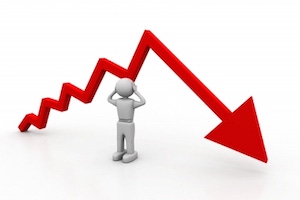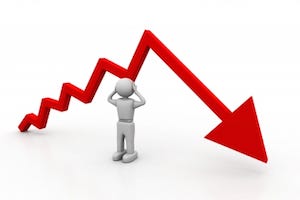If oil is so cheap, why do my plastic parts stay the same price?
With the price of oil hovering around $30 a barrel, many manufacturers who buy plastic components are wondering why their processor hasn't lowered the part price accordingly.I guess we're used to looking at the price at the gas pump: When the price of oil goes up or down, so does the price at the pump. There is a close correspondence between the two. For plastic materials, things aren't exactly like that. The price of oil does not have a direct correlation with the price of a plastic part.
February 25, 2016

With the price of oil hovering around $30 a barrel, many manufacturers who buy plastic components are wondering why their processor hasn't lowered the part price accordingly.
I guess we're used to looking at the price at the gas pump: When the price of oil goes up or down, so does the price at the pump. There is a close correspondence between the two. For plastic materials, things aren't exactly like that. The price of oil does not have a direct correlation with the price of a plastic part.
|
Image courtesy Renjith Krishnan/freedigitalphotos.net. |
So what do you tell customers when they observe that the price of oil and natural gas is fluctuating, be it up or down, as either condition can lead to customers making that call about part pricing. The drop in oil certainly has caused pricing, particularly in commodity resins, to drop, since resins are produced as by-products of oil and natural gas processing.
According to Matt Kaufman, Lead Consultant for Advanced Purchasing Dynamics (Plymouth, MI), the dramatic drop in the price of oil along with over-supply has created some market dynamics that we've not experienced in a while. Kaufman, who has many years in the resins industry and is familiar with pricing, notes in a white paper he published a year ago that "each feedstock has a different correlation factor to oil that is influenced by supply and demand of the feedstock, manufacturing process and region of the world [where] the product is produced." He emphasizes that "not all plastics start with crude oil as their primary building block."
Kaufman answers the question of how buyers of resins (the processors) can take advantage of lower prices, and how you might explain to your customers movement in the price of their parts.
While all plastics are made from fossil fuels, Kaufman notes that "some are manufactured from natural gas, while others start with crude oil." As the natural gas price began to decline with shale drilling in the United States, "plastics derived from natural gas have most likely already experienced a feedstock price advantage, while the oil-derived resins are just starting to see the effect." Kaufman, who is working on an update to last year's report, says that once molders and their customers "are able to understand a plastic's origin, you can move to predict a feedstock's price trends."
For example, Kaufman explains that there may be some materials that are less expensive or whose prices correlate more with falling oil prices: Polycarbonate prices are not expected to fall in line with oil prices, for instance. While there may be alternative materials to polycarbonate that are in line with oil prices, Kaufman notes that "a big consideration is the timing and cost to approve the alternate material and whether or not the material change would be feasible."
From the OEM's standpoint, Kaufman recommends awareness of the resin grades used in plastic components by consulting industry publications, such as those put out by IHS, "to understand recent and projected resin prices as well as feedstock/manufacturing costs. The cost information is important because, as market prices are going down, costs to produce resins may be falling even further and more rapidly." This information can then be used to "challenge any outdated information, such as material alternatives, part weights, etc."
Kaufman next answers the question of how the OEM—the buyer of plastic components—can take advantage of lower prices. "Lower resin prices should translate to lower pricing for plastic components," he said. "In most contractual relationships this does not happen automatically. The buyer [of the parts] must initiate action!"
Some processors have contracts with their largest OEM customers, while others have looser arrangements that may involve looking at part pricing every quarter or six months or even annually. Kaufman addresses this issue by giving the results of a survey of OEMs and Tier 1 suppliers taken a year ago, regarding the types of pricing contracts that they had with their plastics suppliers and looking at two key areas: Assessing the impact of the existing supplier contracts on potential savings opportunities and understanding the resin content and cost of plastic parts.
"By spend coverage, 42% (of those surveyed) had index-based contracts with automatic adjustments for resin movements, and 58% had annual contracts with no automatic adjustments," Kaufman says. "These annual contracts were primarily firm price contracts, with some open to negotiation. Specific to the automatically adjusted contracts, we asked about the frequency of adjustments, with the most common being quarterly at 50%, semi-annually at 33%, and monthly at 17%."
Parts pricing is always a thorny issue, and it has become more so given the low price of oil. As Kaufman explains, it is important to understand the price change frequency of each resin by supplier and family, and question the frequency that should be modified—annually, quarterly or monthly? Next, re-examine the correlation between "buy-side" and "sell-side" resin prices. "If market prices drop in February, your customer may expect an immediate price decrease, even though your supplier contract does not require an adjustment until April or even July," says Kaufman. "This may be an opportune time to re-examine those contracts and synchronize your ‘buy-side' with your ‘sell-side' contracts."
Finally, Kaufman advises resin buyers (processors) to reassess the type of pricing mechanism used to negotiate for resins. "Consider different price mechanisms such as negotiated market prices, index to resin price, raw material formula price or cost plus, and fixed price/fixed with collar or band," he says. (In collar or band arrangements—the terms are synonymous—both parties first agree on a fixed price but also agree to some level of pricing movement under certain circumstances, such as when the index price of a resin fluctuates. These circumstances are managed by means of a collar or band, which is described in the agreement.)
Finally, Advanced Purchasing Dynamics believes that obtaining and using supplier cost breakdown information is fundamental to eliminating cost from the supply chain and arriving at win/win solutions.
"We use breakdowns and cost models in our client engagements and also teach their use in our training curriculum," says Kaufman. "There are several benefits to using this approach from the buyer viewpoint and for suppliers:
It is a data driven approach, and if used consistently makes issue resolution easier;
it can change the tenor of negotiations from positional (win/lose) to less-stressful, more-collaborative, partnership-based negotiations;
it increases knowledge of operations as well as cost accounting, which can benefit the buyer personally."
Given that the price of oil has fallen even more since Kaufman's white paper came out last year, PlasticsToday will provide an update of this information within the next month.
About the Author(s)
You May Also Like





